Cultural Studies
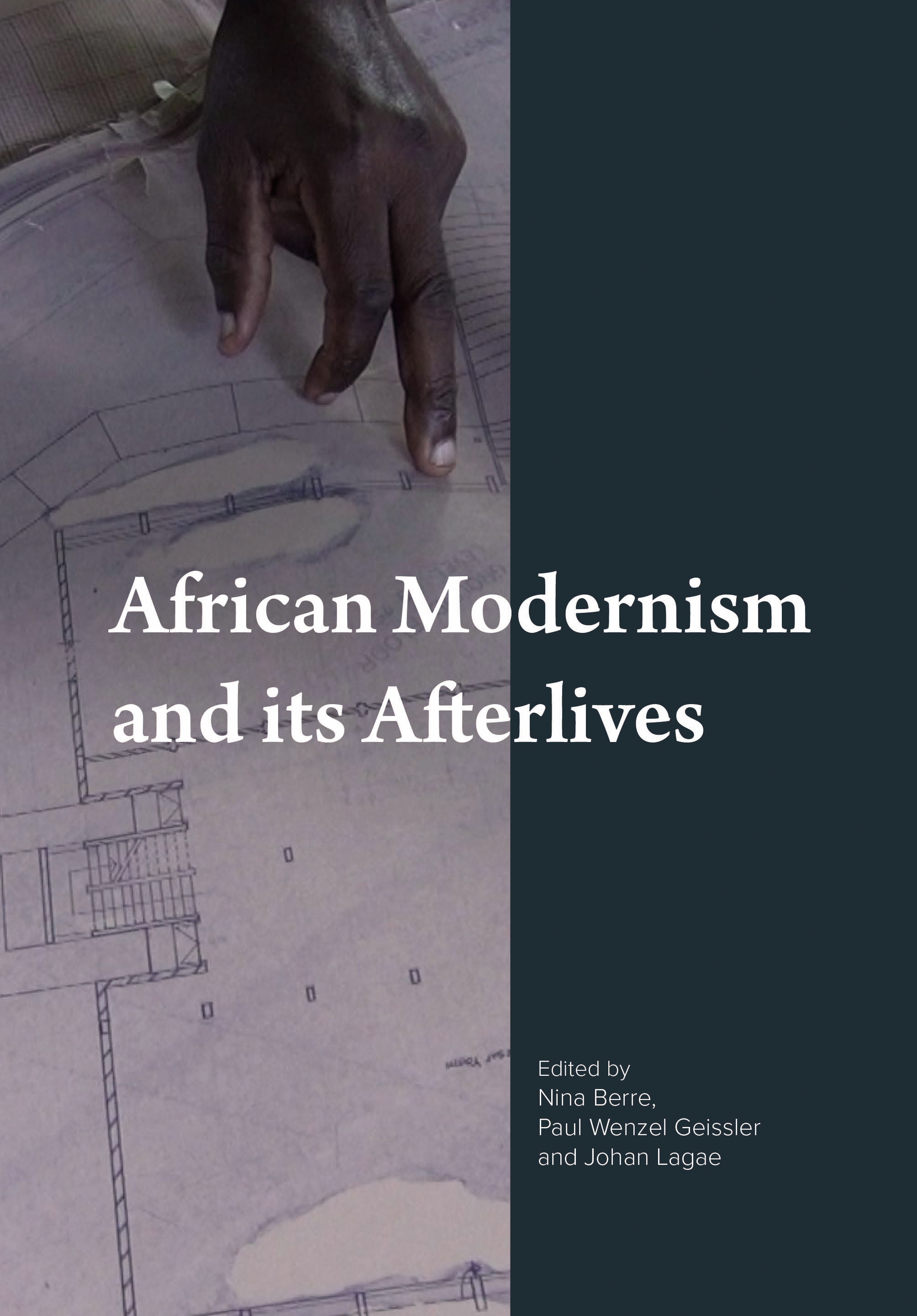
African Modernism and Its Afterlives
This new book is an edited volume of essays that examine the legacy of architecture in a number of African countries soon after independence. It has its origins in an exhibition and symposium that focused on architecture as an element in Nordic countries’ aid packages to newly independent states but the expanded breadth of the essays includes work on other countries and architects. Drawing on ethnography archival research and careful observations of buildings remains and people the case studies seek to connect the colonial and postcolonial origins of modernist architecture the historical processes they underwent and present use and habitation.
It results from the 2015 seminar and exhibition Forms of Freedom at the National Museum of Art Architecture and Design in Oslo Norway. The exhibition showed how modern Scandinavian architecture became an essential component of foreign aid to East Africa in the period 1960–80 and how the ideals of the Nordic welfare system found expression in a number of construction projects. The seminar which built upon the exhibition as well as on a previous collaboration on the legacies of modernism in Africa between the Department of Anthropology of the University of Oslo and the Department of Architecture and Urban Planning from Ghent University broadened the geographic scope of the discussion beyond the Scandinavian context and set the ground for bringing together the disciplines of architectural history and social anthropology.
Primary readership will be among architects and architectural historians and graduate level architecture and urban studies students for whom it will be valuable course material as well as those in fields such as African studies and anthropology. It may also be of interest to those working or researching in public policy and political history.
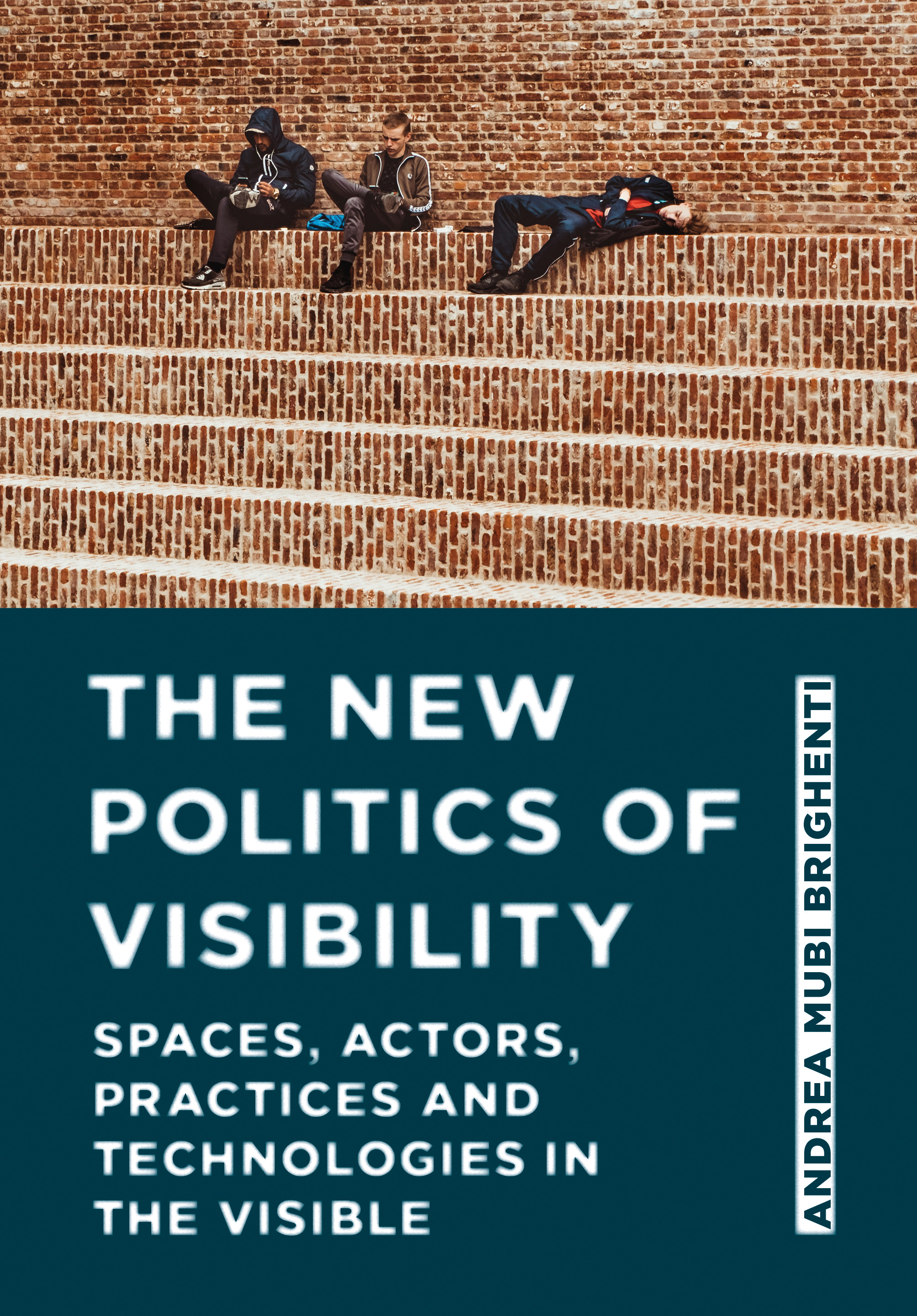
The New Politics of Visibility
Not only does visibility matter to politics but it is increasingly becoming an intrinsic constituent element and a crucial asset to it.
Accordingly the challenge to the social science becomes that of understanding how the new institutional urban and technological settings are reshaping the organisation of visible. This book brings together a team of distinguished scholars and researchers interested in employing exploring and critiquing the analytical category and the practical stakes of visibility.
Ranging from urban public space to the new media and social media platforms a vast terrain of inquiry is addressed here by joining together original theoretical elaboration and careful empirical studies. The result is a thoroughly interdisciplinary endeavour conducted with passion and insight.
The New Politics of Visibility includes nine original chapters specifically commissioned for this collection. Contributions are interdisciplinary and address an array of topical areas in the newly emerging modes of governance and the novel social formations coming into existence. The transformations of urban space and the working of the new media form a core concern recurring through many of the essays but is by no means the sole topic as other essays address the politics of visibility in crucial cultural spheres including gender relations and professional life.
Audience will be academics researchers graduate and postgraduate students

Canadian Critical Luxury Studies
Canadian Critical Luxury Studies: Decentering Luxury is a dynamic new contribution to the study of luxury. The essays in this collection challenge Euro- and US-centric perceptions that bind luxury to either a colonial past or a consumerist present. The book announces a new collective of thinkers who focus on Indigenous and Canadian instances of luxurious production experiences and sites to propose a new definition of luxury that includes a plurality of regional practices highlighting that Canadian luxury centres on community and connection.
Each of the interdisciplinary contributions analyse luxury from different vantage points to understand why luxury has succeeded or failed in the Canadian context. From the history of the fur trade to the latest Indigenous fashion movement from the T. Eaton Co.’s 1920s Made-in-Canada campaign to the on-again-off-again Toronto Fashion Week from Vancouver public art commissions to Montréal’s future-forward fashiontech sector the essays in this volume explain what makes and breaks Canadian luxury.
These original case studies redefine luxury for Canada – a former colonial possession and contemporary second-tier cultural market – and lay the foundation for the critical study of luxury in other historically secondary geographies that produce consume and circulate material and symbolic luxuries. The collection ultimately challenges old myths and the mystique surrounding European luxury to give it a new lustre that shines light on those actors who have been historically excluded from its privilege: Indigenous peoples immigrants the working classes. It sheds light on the reasons that conventional expressions of luxury may fail in secondary markets and offers guidance for fashiontech innovations that invest in the individual without imposing dehumanizing values of efficiency and rational measurement.
Although focused on the Canadian context the book will appeal to an international audience of scholarly and industry readers. Its interventions about broadening the focus of luxury studies beyond traditional sites in Western Europe make it an important text for global audiences. It offers an alternate reading of conventional luxury histories sites and practices; in doing so it models a national approach to luxury that can be applied to alternate national markets.
Jessica P. Clark is a historian of Britain and empire with a focus on gender consumption and labour and an associate professor of history at Brock University Ontario Canada. Nigel Lezama is an associate professor of French studies at Brock University and works at the intersection of fashion luxury literary and cultural studies.
Contributions are drawn from a number of fields including but not limited to Indigenous studies museum studies business management cultural studies fashion studies technology and industry. Contributors include Kathryn Franklin University of Toronto; Rebecca Halliday Toronto Metropolitan University; Riley Kucheran Toronto Metropolitan University; Valérie Lamontagne Concordia University; Marie O'Mahony Ontario College of Art and Design; Julia Polyck-O'Neill York University Ontario.
This is a primarily an academic book. It is of great relevance to scholars within the subfield of critical luxury studies as well as scholars of consumer and commodity cultures more broadly and those working or interested in Canadian studies media studies critical studies and historians.
Researchers and postgraduate students studying luxury as well as those studying the history of the development of Canada its colonial past and the marginalization of Indigenous people and with the development of fashion technologies will also find it useful.
Academics and practitioners concerned with the development of city and nation branding will find the book of value.
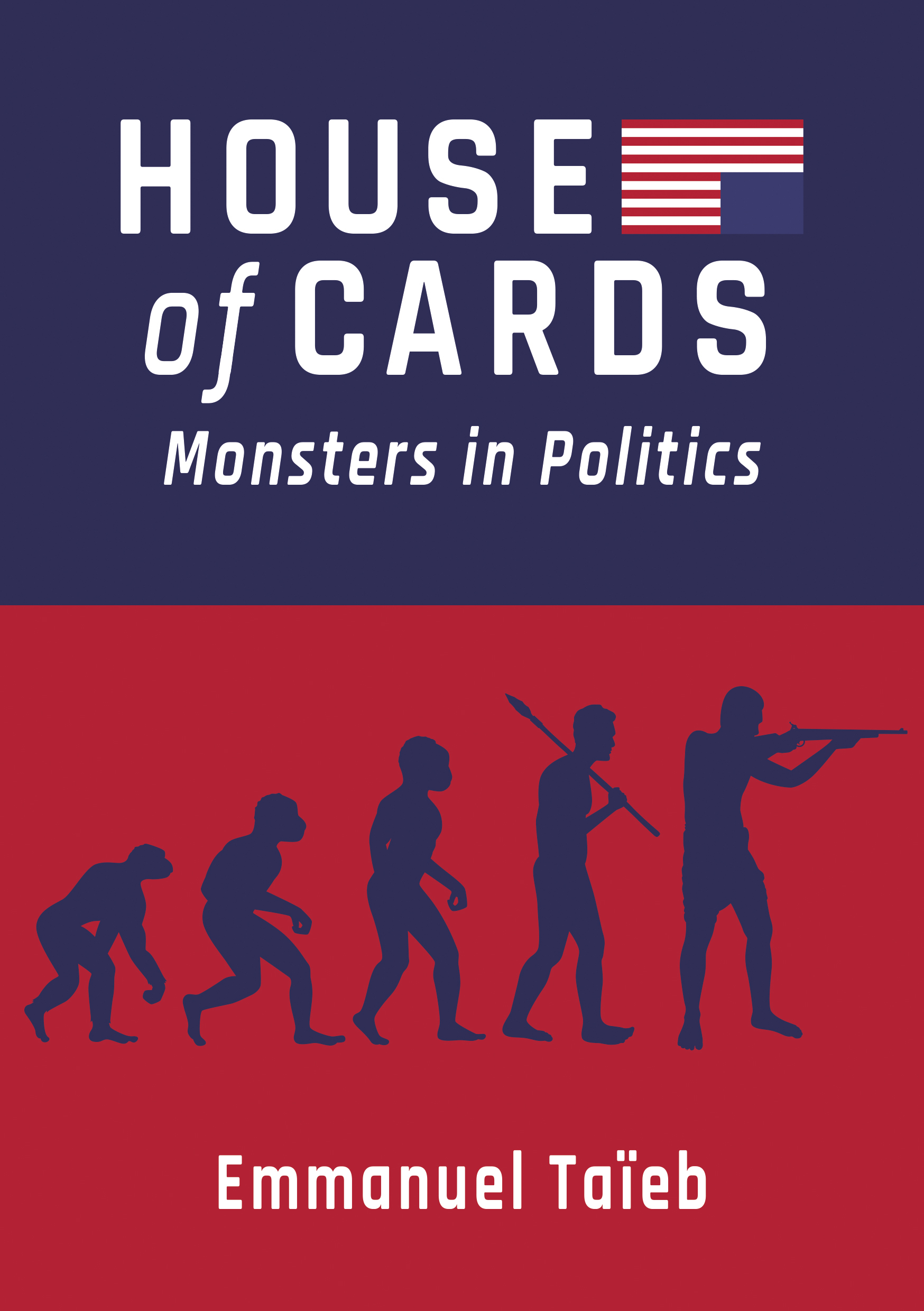
House of Cards
Although by all appearances House of Cards is a television series about politics it in fact explores some of the most subversive questions raised by Machiavelli’s writings: what if the Prince were a ferocious animal? What would happen if our political world were overtaken by vampires? Would they be capable of mastering their bloodthirsty instincts or would they remain true to their fundamental nature?
In their relentless quest for power Frank Underwood his wife Claire and his chief of staff Doug Stamper are so ruthlessly ambitious that they demolish all boundaries between good and evil. According to a Machiavellian logic taken to its extreme the specific necessity of a given situation always wins out over common morality. In the struggle for survival these people are the predators determined to come out on top whatever the cost.
This book examines how the producers of the series take monstrous characters – who would not be out of place in a crime series or a horror film – and set them in the world of politics which offers little resistance to violence and turns into a laboratory for systematic destruction. In this variation on the conflict between brutalization and civilization at the heart of power the political sphere therefore becomes the scene of crime par excellence.
Although the book contains concepts and theories in political science it is accessibly written. It is also didactic: many examples are taken from the series and from the novels so the reader always understands what is at stake in the analysis. It will find both an academic and a more general audience.
Primary academic readership will be scholars and students in law political science film studies media studies and cultural studies. The wider readership will include fans of the show and of course people interested in politics political thrillers political philosophy corruption and democracy as well as the nature of political leadership.
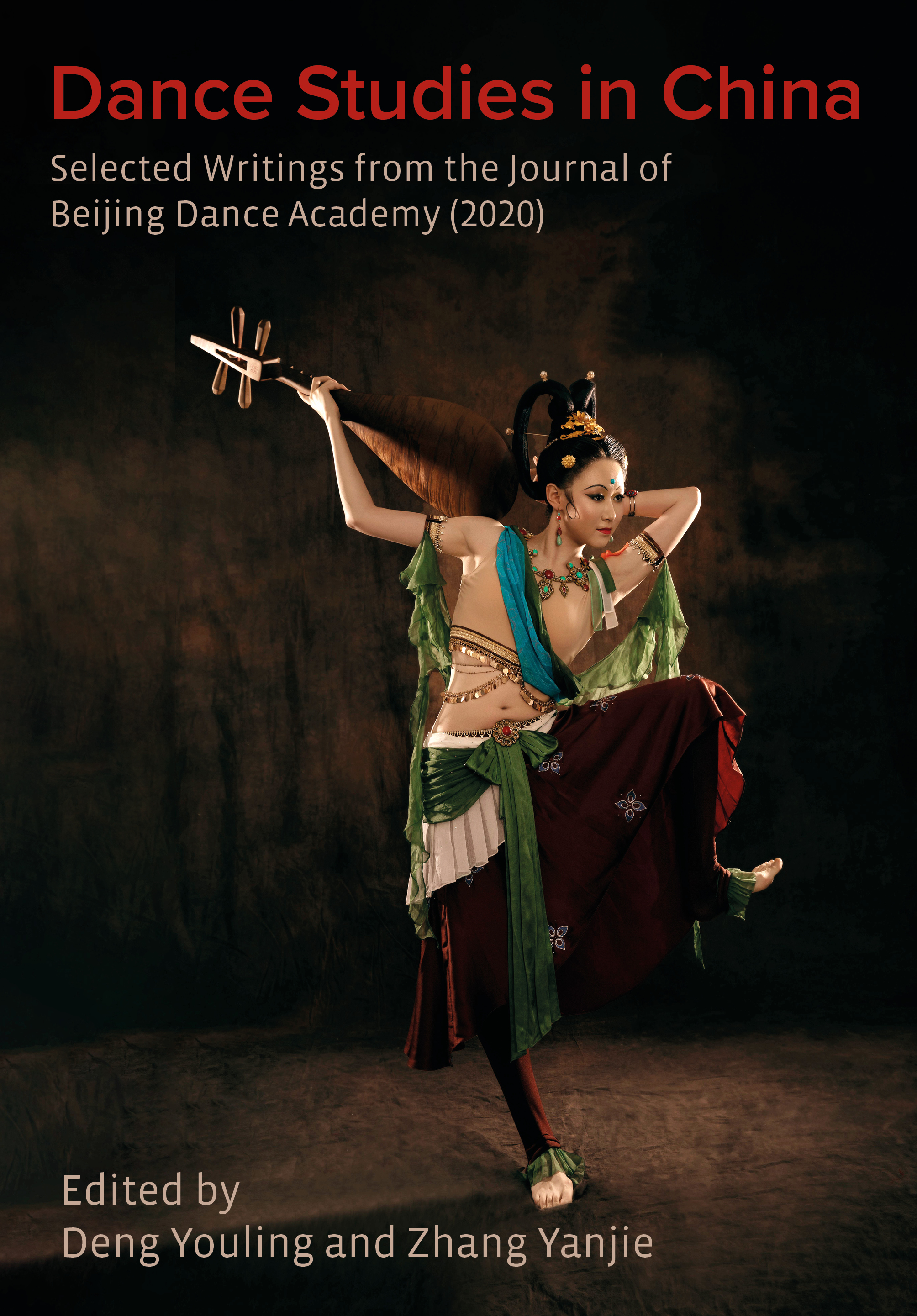
Dance Studies in China
Dance Studies in China is a collection of articles selected from issues of the Journal of Beijing Dance Academy translated for an English-speaking audience. Beijing Dance Academy is a full-time institution of higher learning with commitment to developing excellent professional dancers choreographers and dance researchers. This collection includes an interview with Shen Wei the Chinese-American choreographer painter and director living in New York City USA.
Founded in 1954 the former Beijing Dance School was the first professional dance school ever established since the founding of People’s Republic of China. Beijing Dance Academy (BDA) officially established in 1978 it provides BA and MA degrees and has become the only institution of higher learning for professional dance education in China as well as the largest prestigious dance school with comprehensive concentrations in the world.
In recent years BDA has committed to develop its research profile specialising in dance the Journal of Beijing Dance Academy is one of such outcomes. The Academy is also actively engaging with international collaboration.
The Intellect China Library is a series of new English translations of the latest scholarship in Chinese that have not previously been available. Subjects covered include visual arts performing arts popular culture media and the broader creative industries. The series aims to foster intellectual debate and to promote closer cross-cultural knowledge exchange by introducing unique Chinese scholarship and ideas to our readers.
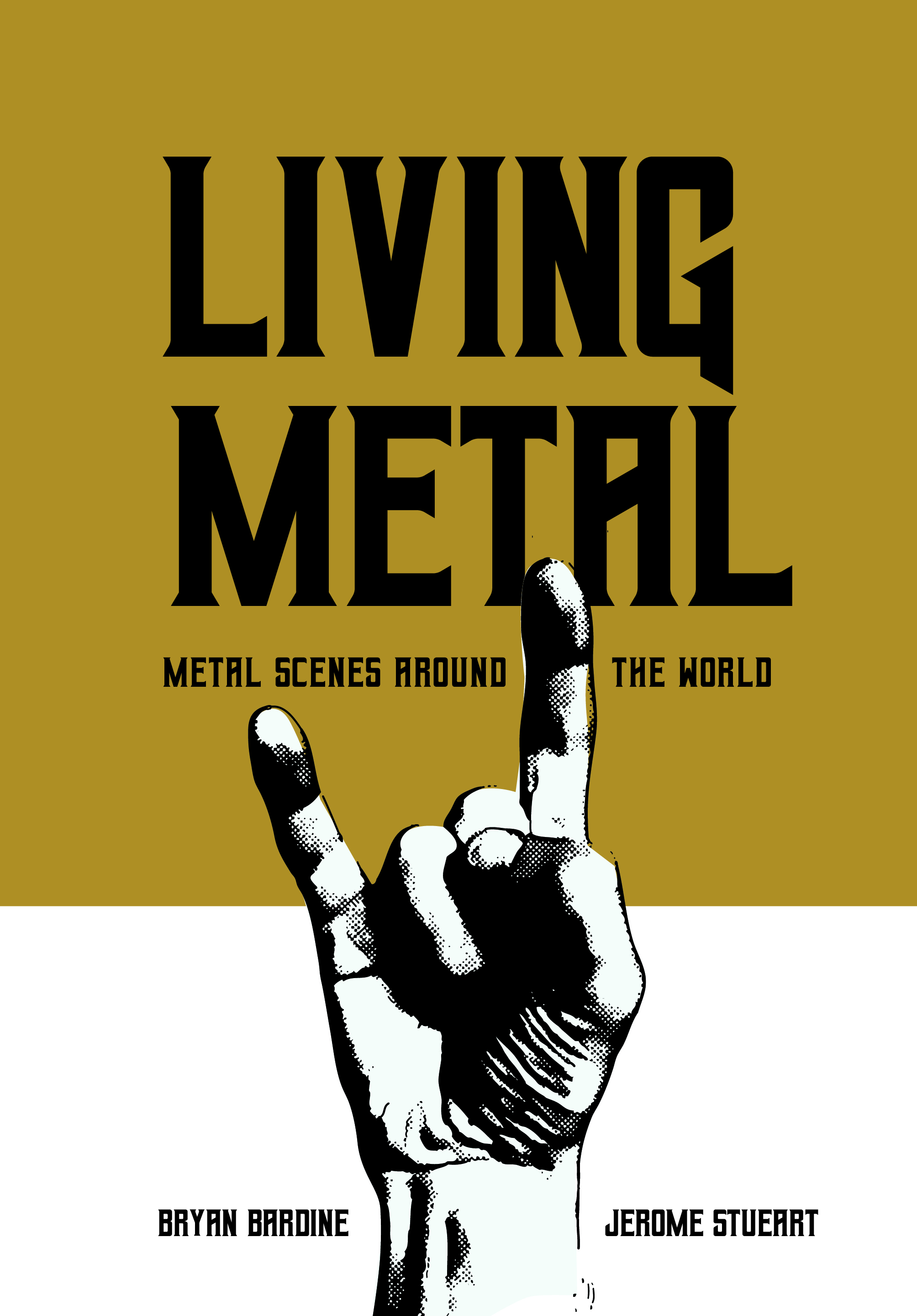
Living Metal
This is the first study of its kind focusing exclusively on scenes throughout the world; it makes an important contribution to metal studies.
Metal Scenes around the World is a collection of thirteen chapters that examine metal scenes from smaller communities like Dayton Ohio in the USA to entire countries such as Estonia. The goal of the book is to expand the research on metal scenes.
This is the only book produced on metal scenes to date and it will lead the way to more research in this new area of metal studies. The strongest element of the book is its international focus with chapters from such diverse settings as post-apartheid South Africa Graz Nantes Brazil and Turkey. The chapters are detailed richly embedded in local histories and contexts and provide important analyses of their respective scenes.
Foreword from Henkka Seppälä former bassist with the Finnish metal band Children Of Bodom.
Primary readership will be composed of fans and scholars of metal music and those in the fields of anthropology musicology and history. The diversity of the chapters connects metal to other disciplines in the music field and the book is likely to have appeal more widely to anyone who likes music.
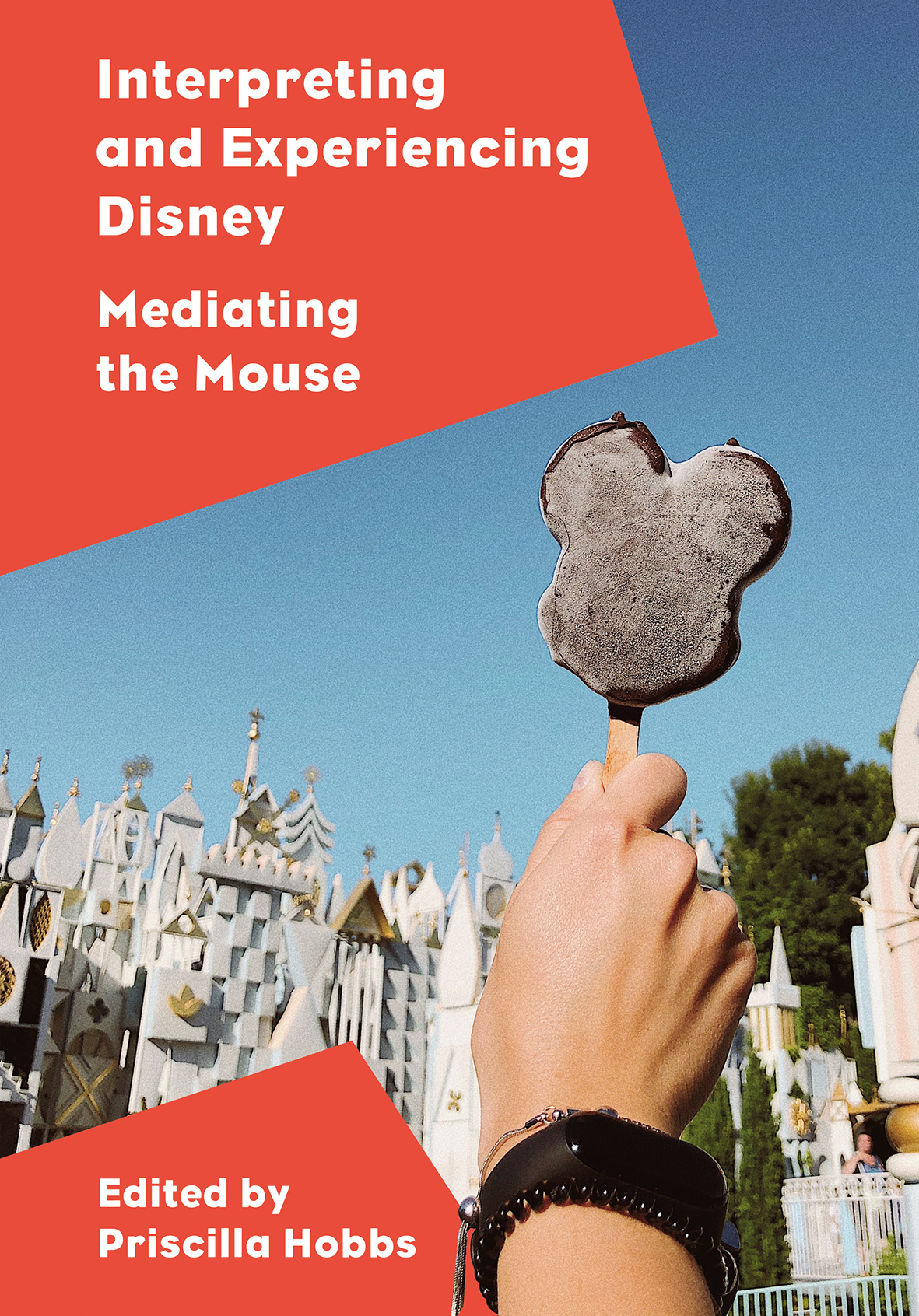
Interpreting and Experiencing Disney
Ever since the premiere for the first Mickey Mouse cartoon in 1928 Disney has played a central role in American popular culture which has progressively expanded to include a global market. The company positioned itself to be a central role in family entertainment and many of its offerings – from films to consumable products – have deeply embedded themselves into not only the imaginations of children and adults but also into the threads of one’s life experience. It is difficult to go through life without encountering one Disney product. Because of this fans of Disney build connections with their favourite characters and franchises some of which are fuelled further by Disney’s own marketing practices.
Similarly Disney responds to the cultural values of the era through its films and other media offerings. In this volume scholars from varying backgrounds take a close look at facets of the Disney canon as more than agents of entertainment or consumption and into underlying messages at the very heart of the Disney phenomenon: the cultural response that drives the corporation’s massive production and marketing machine. The relationship between Disney and its fans is one of loyalty and love shaping cultural behaviours and values through the brand and its products. Disney responds in kind with a synergistic approach that makes it possible to experience Disney in any format at any given time.
Primary readership will be academics researchers educators scholars and students working in the fields of media and cultural studies especially those interested in marketing and branding and in the Disney Company in general. The accessible writing style and the range of topics covered make it suitable for postgraduate students and academics working in these fields as well as third-year undergraduate students.
The book will also appeal to academics working in the related fields of tourism studies film and television studies and given the focus of some of the chapters in gender studies.
Although academic in focus the accessible writing style does mean that it may also have appeal to the non-academic reader and fans of Disney.
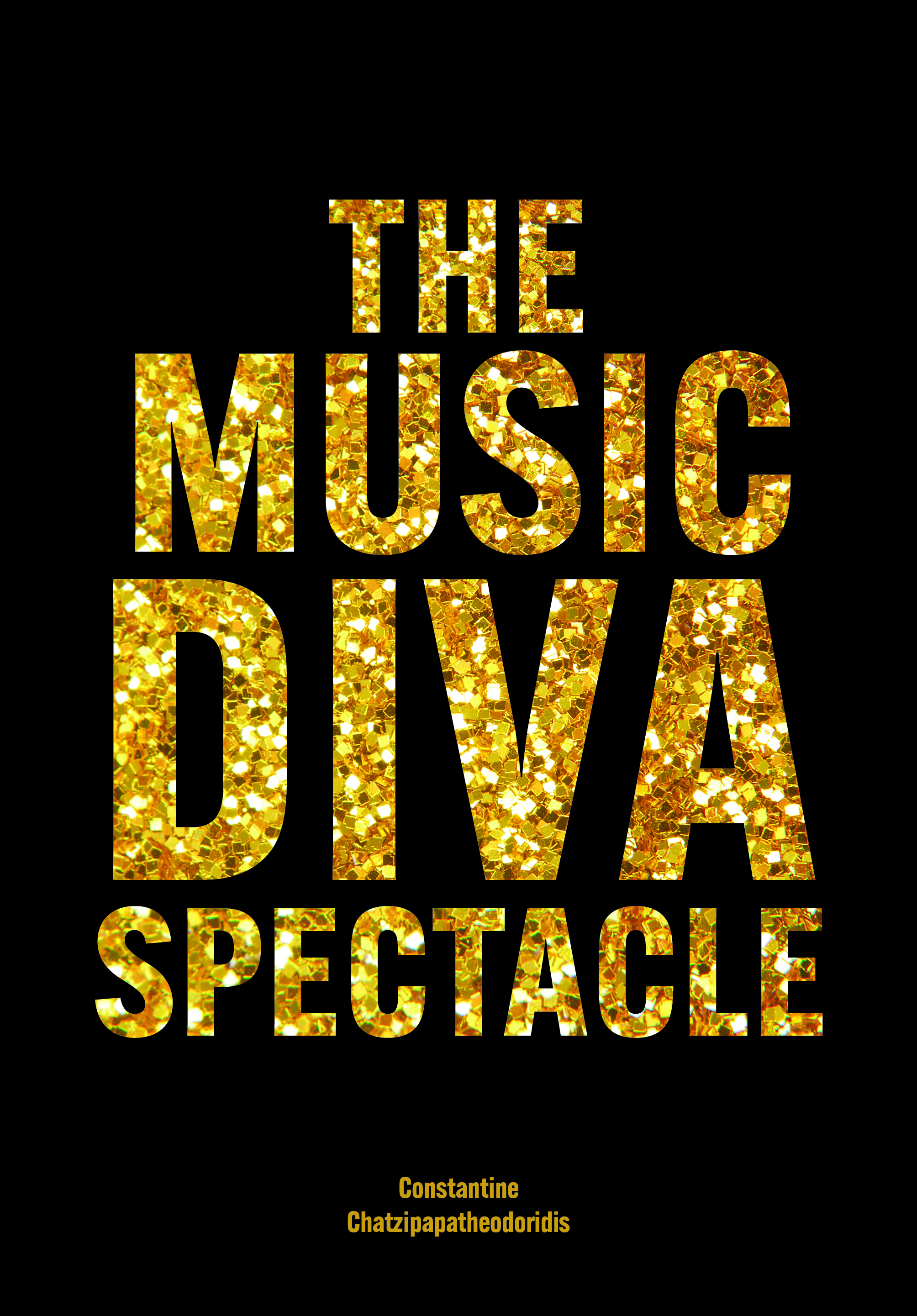
The Music Diva Spectacle
This original new book has a unique focus on diva camp as popular music praxis. The author analyses case studies of diva concert tour shows in order to present a performance studies reading of camp the culture-sharing process of production and audience reception. Detailed case studies include contemporary stars Madonna Kylie Beyoncé Lady Gaga and a look at audience drag.
The book contains detailed descriptions of artists’ performances along with the analysis of exciting and popular contemporary performers. The emphasis on camp is particularly interesting as thinking about queerness has pushed camp into the background in recent years. This is an interesting and exciting revival of the question of camp in contemporary queer performance.
The book considers and investigates the relationship between camp theory as an academic subject and the figure of the diva as one that utilizes and expresses camp in various ways. It seeks to establish how camp is appropriated or owned by the diva and how this impacts on and is in turn appropriated and owned by the audience.
Primary readership will be among researchers and educators working in the fields of cultural studies performance studies theatre studies music studies LGBTQ+ studies critical race studies as well as undergraduate students interested in these topics. It will be a useful classroom resource and addition to recommended reading lists.
The Music Diva Spectacle may have interest for more general readers with an interest in the subjects of the case studies but the main focus is on the academic market.
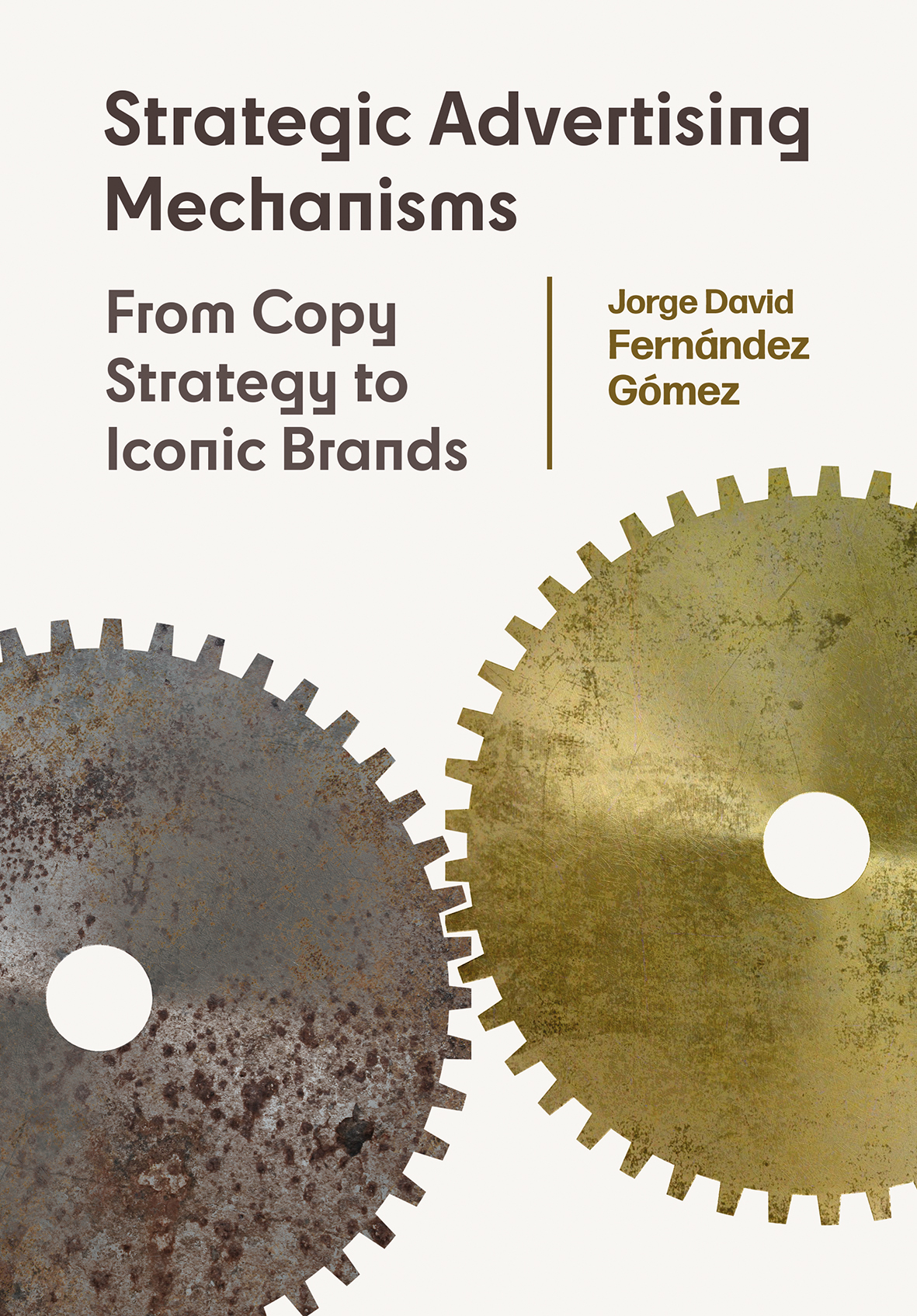
Strategic Advertising Mechanisms
It is the first time that the different strategic advertising mechanisms are explained in a single book. And this is also the first time that a book has brought together the most important and transcendent (for its applicability to the advertising market) strategic advertising mechanisms.
The text explains from classic mechanisms such as Rosser Reeves's USP or Procter & Gamble's copy strategy to modern mechanisms such as Kevin Roberts's Lovemarks or Douglas Holt's iconic brands. It also considers European mechanisms such as Jacques Séguéla’s star strategy or Henri Joannis’s psychological axis. The book has the most complete academic review.
Strategic Advertising Mechanisms: From Copy Strategy to Iconic Brands integrates the most important strategic advertising mechanisms developed throughout the time: USP brand image positioning Lovemarks... This is the first and only book to date that compiles the most consolidated methods by advertisers or advertising agencies (P&G Bates Ogilvy or Euro) in the history of modern advertising.
Primary readership will be among practitioners researchers scholars and students in a range of disciplines including communication advertising business and economic information and communication sociology psychology and humanities. There may also be appeal to the more general reader with an interest in how advertising strategic planning works.
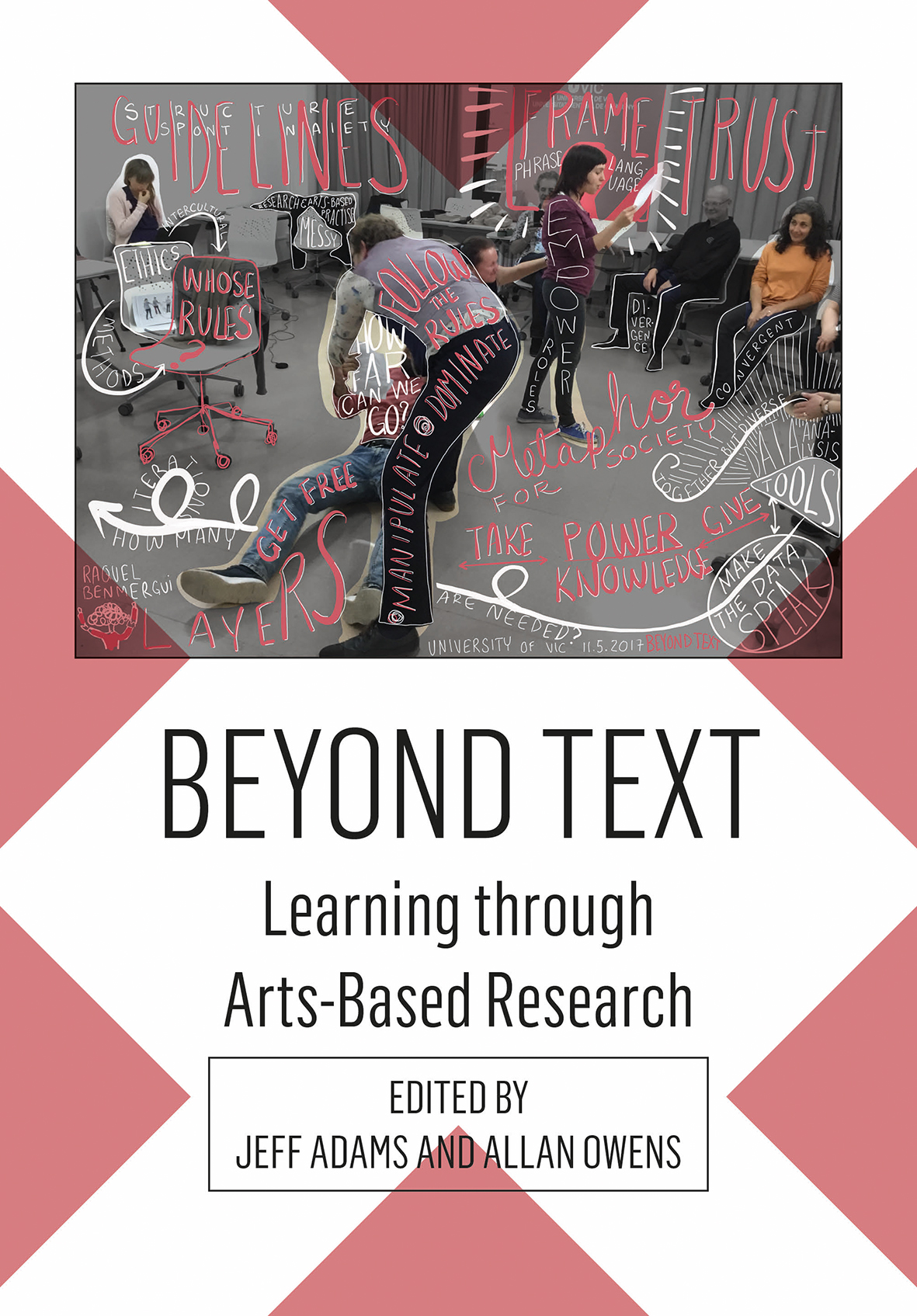
Beyond Text
This original new book represents a variety of art forms across different professional contexts. Its focus is on the ways that educational practitioners and leaders from a range of cultures disciplines professions and organizations practice arts-based research and it explores how these can enable innovative means of learning and enhance professional and organizational development.
This vibrant project allowed for long term systematic conversations between a large and unusually diverse group of twenty-nine people from eight organisations in six countries. It was unusually diverse in many senses: for some the word ‘data’ meant little for others it was central to their daily work; for some artistic practice was core while for others the arts were a means to an end; while some were social entrepreneurs running their own companies others were researching in universities and a number were doing both; some were working within the STEM disciplines of business management engineering science technology sustainability and the built environment others were in the social sciences of social and health care education and youth work while others were engaged in rapid or long term social and cultural action as a means of resisting state violence and military occupation; some worked in one of the safest countries on the planet others in one of the most tear-gassed refugee camps in the world.
Within these professional groups there were also ranges of experience for example senior researchers early career researchers PhD students seasoned professional artists and newcomers to arts forms. Whilst the main communication of this group was English six other major languages were spoken Estonian Finish Catalan Spanish Arabic and key stakeholders bought Swedish and Japanese into the space. This meant that while the conversations in and about arts-based practice were transnational interdisciplinary and systematic they had all the messy troubled-ness that the intercultural on all of the above levels brings with it.
This unique and exciting collection discusses how creative arts practices can have a significant impact on research across a range of international contexts drawing on their own field of research and educational experience. For instance drama music dance and visual arts can be used to understand how learners internalise concepts reflect on how decisions are made in the midst of action in leadership education or investigate the use of the intuitive alongside the rational and analytical in their educational experience. Non-textual arts-based forms of research can also provide modes of investigation into pedagogical and professional practices when applied to fields that normally lie outside of the arts.
Its greatest strengths are its focus on arts-based research as a way of learning in a variety of contexts and often in collaboration. Its consistent theoretical artistic and professional engagements make it a very readable and engaging read.
The representation of a variety of art forms across different professional contexts means that this book will have appeal to several readerships in higher education including the following groups.
Academics and practitioners using arts-based methods in organisation and business settings. Researchers in the arts and researchers generically in the social sciences humanities and arts. University students of the arts education and professional studies especially those interested in the wider international and intercultural diversity of research methodologies.
Those working in international research teams using any form of qualitative research will also find this collection very interesting. It also has potential interest for groups outside higher education with an interest in arts-based research – for example community groups looking to explore collaborative projects.
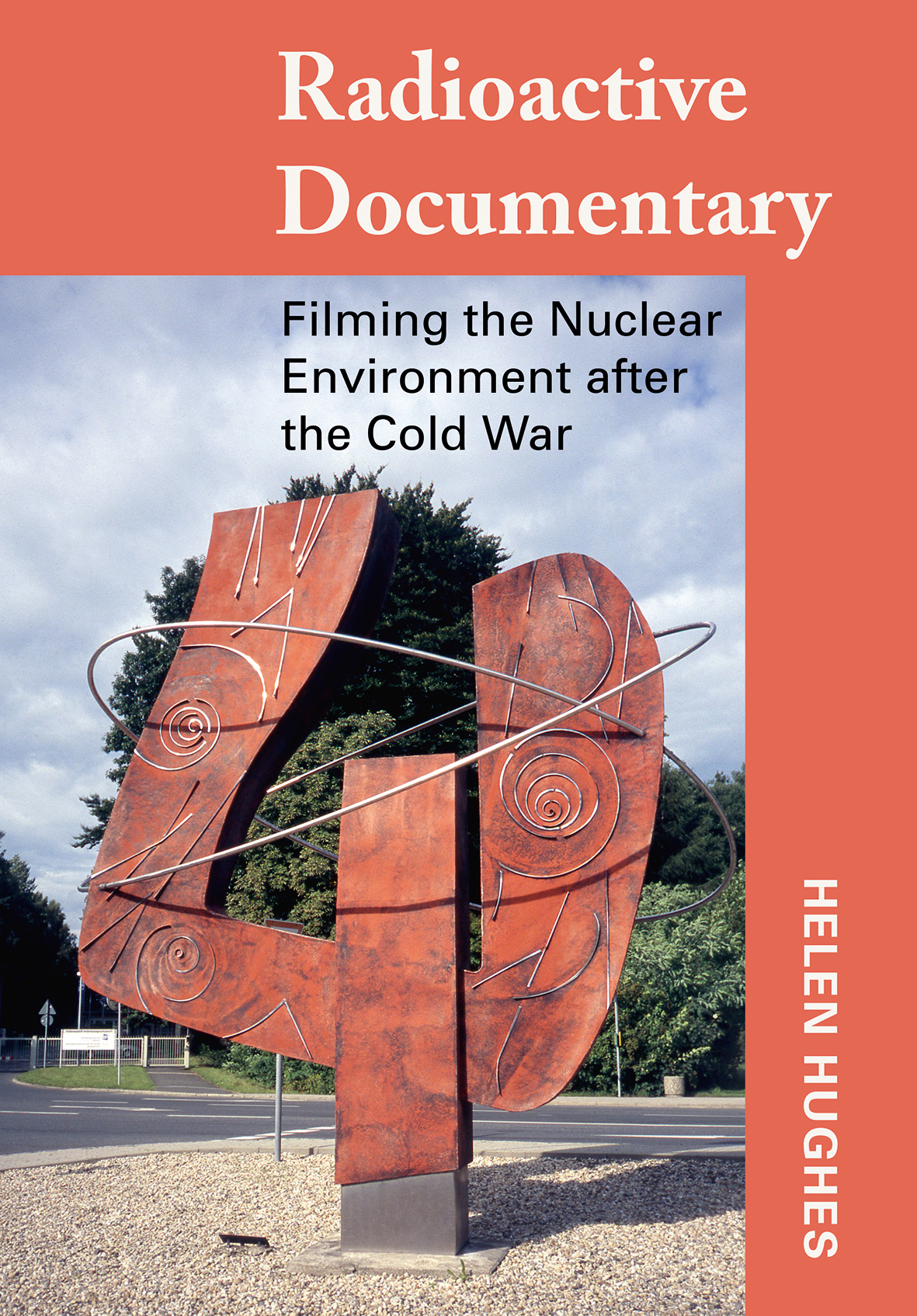
Radioactive Documentary
How have nuclear issues been covered in documentary since the end of the Cold War? This original new book explores how the sometimes elusive sometimes dramatic effects of uranium products on the landscape on architecture and on social organisation continue to show up on-screen maintaining a record of moving images that goes back to the early twentieth century.
It is the first book to analyse independent documentary films about nuclear energy - it suggests an approach to documentary films as agents of change.
Each chapter of this book focuses on one of ten different documentary films made in Europe and North America since 1989. Each of these films works the material and the ideological heritage of the nuclear power industry into visions of the future. Dealing with the legacy of how ignorance and neglect led to accidents and failures the films offer different ways of understanding and moving on from the past. The documentary form itself can be understood as a collective means for the discovery of creative solutions and the communication of new narratives. In the case of these films the concepts of radioactivity and deep time in particular are used to bring together narrative and formal aesthetics in the process of reimagining the relationships between people and their environments.
Focusing on the representation of radioactive spaces in documentary and experimental art films the study shows how moving images do more than communicate the risks and opportunities and the tumultuous history associated with atomic energy. They embody the effects of Cold War technologies as they persist into the present acting as a reminder that the story is not over yet.
Primary readership will be academics and students working in environmental communication and in environmental humanities more broadly. For students of independent film or documentary it will also provide a clear picture of contemporary themes and creative practice.
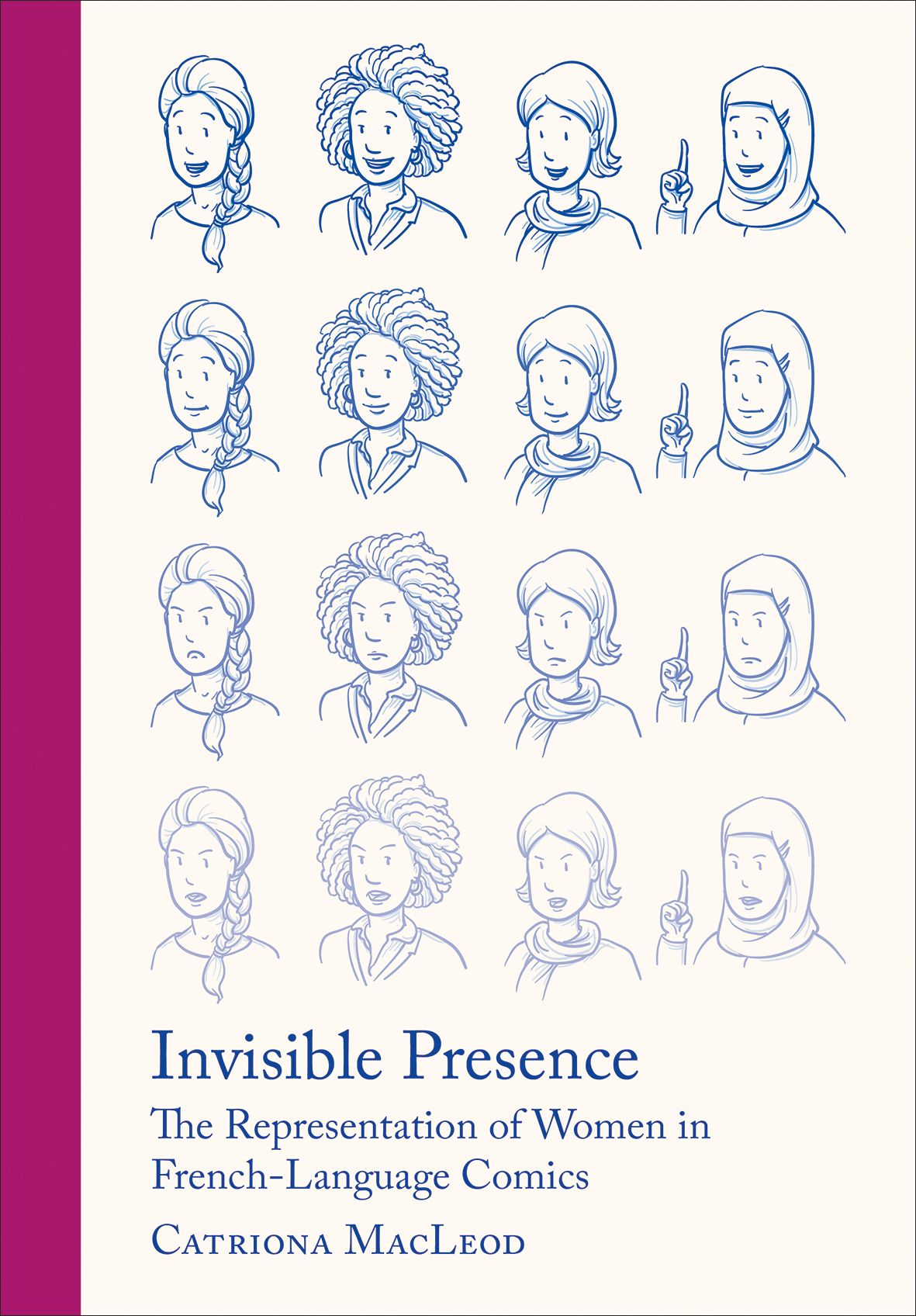
Invisible Presence
This book looks at the representation of female characters in French comics from their first appearance in 1905. Organised into three sections the book looks at the representation of women as main characters created by men as secondary characters created by men and as characters created by women.
It focuses on female characters both primary and secondary in the francophone comic or bande dessinée as well as the work of female bande dessinée creators more generally. Until now these characters and creators have received relatively little scholarly attention; this new book is set to change this status quo.
Using feminist scholarship especially from well-known film and literary theorists the book asks what it means to draw women from within a phallocentric male-dominated paradigm as well as how the particular medium of bande dessinée its form as well as its history has shaped dominant representations of women.
This is the first book to study the representation of women in the French-language drawn strip. There are no other works with this specific focus either on women in Franco-Belgian comics or on the drawn representation of women by men.
This is a very useful addition to both general discussions of French-language comics and to discussions of women’s comics which are focused on comics by women only.
As it is written in English and due to the popularity of comic art in Britain and the United States this book will primarily appeal to an Anglo-American market. However the cultural and gender studies approach this text employs (theoretical frameworks still not widely seen in non-Anglophone studies of the bande dessinée) will ensure that the text is also of interest to a Franco-Belgian audience.
With a focus on an art-form which also inspires a lot of public (non-academic) enthusiasm it will also appeal to fans of the bande dessinée (or wider comic art medium) who are interested in the representation of women in comic art and to comics scholars on a broad scale.
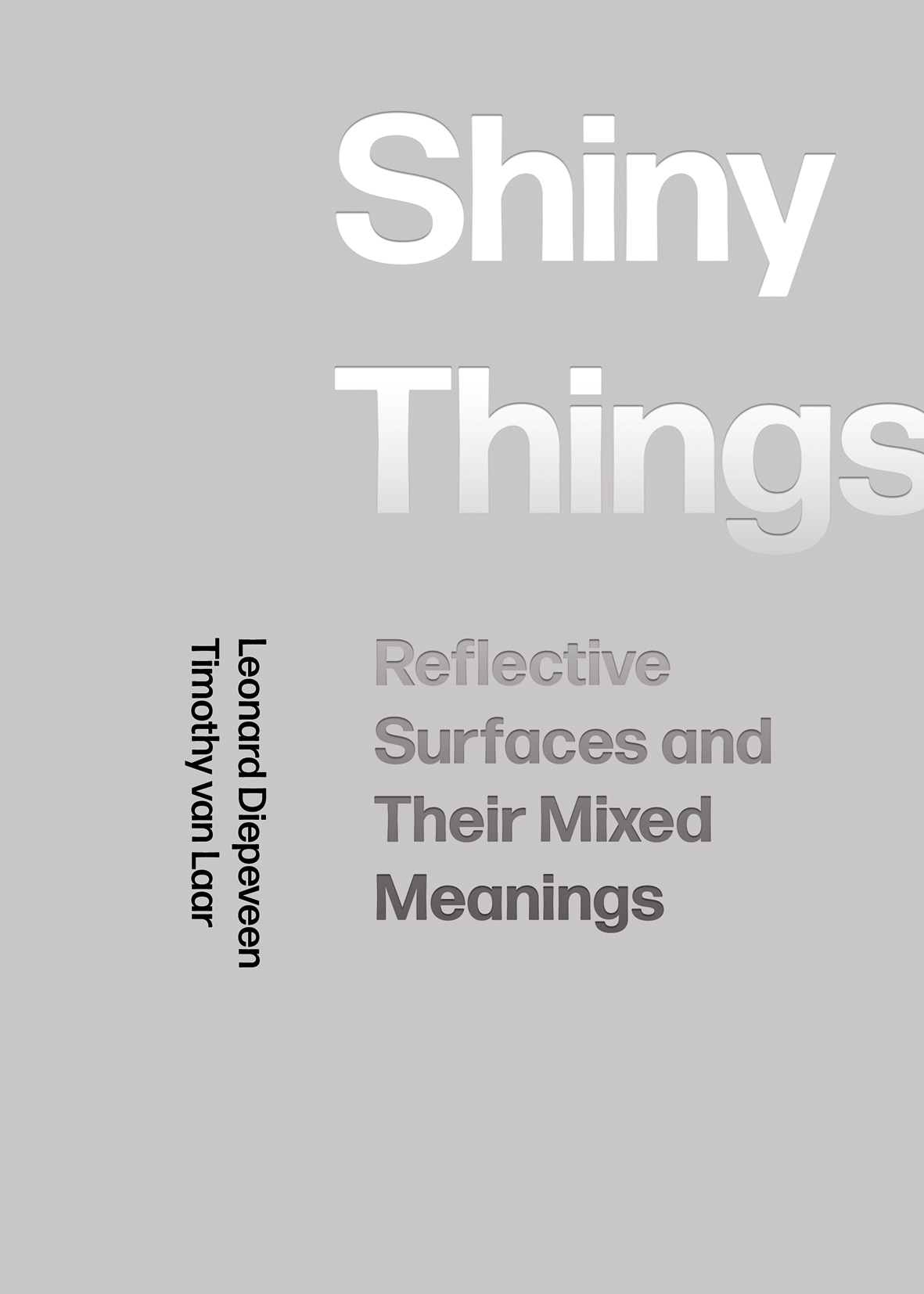
Shiny Things
Shiny Things combines an interest in visual art with a broad attention to popular culture – the wideness of its range is striking. It is more than just an expansion of subject matter which many of today’s innovative books also have – it considers how a specific physical property manifests itself in both art and culture at large and contributes to an analysis of and polemics about the world. It is accessibly written but with a careful application of contemporary theory.
Interesting informative and entertaining this will appeal to progressive thinkers looking for new ways of presenting ideas. This is scholarship that challenges stale thought and interacts with philosophical ideas in real time with a versatility that can often be lacking in traditional academic scholarship.
Using art especially contemporary art as its recurrent point of reference the authors argue that shininess has moved from a time when rarity gave shiny things a direct meaning of power and transcendence. Shininess today is pervasive; its attraction is a foundation of consumer culture with its attendant effects on our architecture our conceptions of the body and our production of spectacle. Power and the sacred as readings of the shiny have given way to readings of superficiality irony and anxiety while somehow shininess has maintained its qualities of fascination newness and cleanliness.
Examines the meanings and functions of shininess in art and in culture more generally: its contradictions of both preciousness and superficiality and its complexities of representation; the way shininess itself is physically and metaphorically present in the construction of major conceptual categories such as hygiene utopias the sublime and camp; and the way the affects of shininess rooted in its inherent disorienting excess produce irony anxiety pleasure kitsch and fetishism. All of these large ideas are embodied in the instantly noticeable sometimes precious and sometimes cheap physical presence of shiny things those things that catch our eye and divert our attention. Shininess then is a compelling subject that instantly attracts and fascinates people.
The book engages primarily with visual art although it makes frequent use of material culture as well as advertising film literature and other areas of popular and political culture. The art world however is a place where many of the affects of shininess come into clearest focus where the polemical semiotics of shine are most evident and consciously explored.
Artists as diverse as Anish Kapoor (whose popular Cloud Gate sculpture in Chicago is a repeating example in the book) Olafur Eliasson Jeff Koons Carolee Schneemann Audrey Flack Fra Angelico and Gerard ter Borch centre the book in an art discourse that opens up to automobiles Richard Nixon and Liberace.
Will be relevant to academics scholars and students with an interest in contemporary theory and material and popular cultures. Potential interest across the humanities: philosophy gender studies perhaps public relations advertising and marketing.
It will also appeal to more general readers with an interest in popular and material cultures art and aesthetics. It is written in a genuinely accessible style and its ideas and theory are embodied through examples and narratives. Will be of interest to readers of Oliver Sacks James Gleick George Lakoff James Elkins or Rebecca Solnit.

The Otherness of the Everyday
At the end of 2019 to the beginning of 2020 when the coronavirus first emerged Wuhan in China became the first city in the world affected by this deadly disease. It then rapidly spread to the entire country and further on to Europe America and the rest of the world.
During these strange times we witness the emptiness of streets squares and cities everywhere; we are estranged from and yet ‘connected’ to each other. As a response to the pandemic Jiang Jiehong convened in-conversation talks with figures from different disciplines in the Chinese-speaking world including anthropology architecture art curating fashion film literature media museum music and photography.
The twelve high-profile participants in these conversations are Xiang Biao Zhang Peili Pi Li Zhang Zikang Gu Zheng Li Lin Zhang Zhen Shu Kewen Jiang Jun Wang Shouzhi Chen Danqing and Zhu Zheqin.
These conversations foster new understandings of this present-day crisis; the threat of the invisible notions of distance and spatialization separation and isolation communication and mobility discipline and surveillance and community and collectiveness as well as the increase in conflicts and divisive voices between China and the world. At the same time these reflections give us the opportunity to re-examine our past ‘normality’ and to project our future visions of a post-COVID world.
Readership will include those working and studying in the humanities and specifically in the disciplines of the interviewees and those who have particular interests in contemporary China. The Otherness of the Everyday is also of interest to a more general audience who has experienced the pandemic and is seeking innovative understandings of this global crisis in human history.
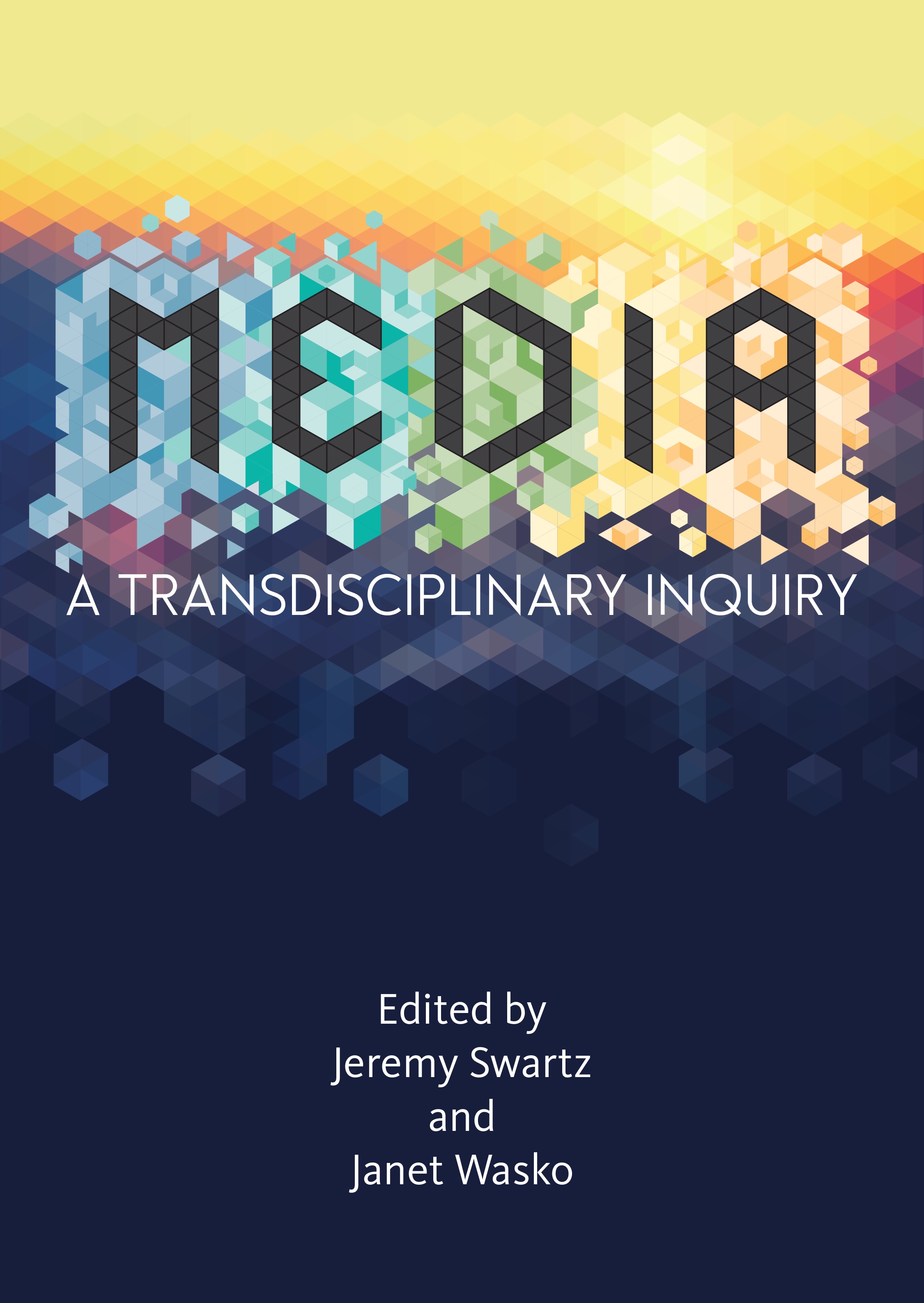
MEDIA
The first in the Media-Life-Universe trilogy this volume explores a transdisciplinary notion of media and technology exploring media as technology with special attention to its material historical and ecological ramifications. The authors reconceptualize media from environmental ecological and systems approaches drawing not only on media and communication studies but also philosophy sociology political science biology art computer science information studies and other disciplines.
Featuring a group of internationally known scholars this collection explores evolving definitions of media and how media technologies are transforming theory and practice. As the current media includes a wider and wider range of concepts products services and institutions the definition of media continues to be in a state of flux. What are media today? How is media studies evolving? How have technologies transformed communication and media theory and informed praxis? What are some of the futures of media?
The collection challenges traditional notions of media as well as concepts such as freedom of expression audience empowerment and participatory media and explores emergent media including transmedia virtual reality online games metatechnology remediation and makerspaces.
The book’s primary readership will be academics scholars and students in media and communication studies including a wide range of undergraduate and graduate courses in media studies communication studies and new media. Suitable for classroom use in the areas of philosophy of communication and media media theory media ecology cultural studies media archaeology feminist studies and political economy of communications and media.

The Cultural Impact of RuPaul’s Drag Race
Insightful provocative and now in paperback The Cultural Impact of RuPaul’s Drag Race is a collection of original material that goes beyond simple analysis of the show and examines the profound effect that RuPaul’s Drag Race has had on the cultures that surround it: audience cultures economics branding queer politics and all points in between. Once a cult show marketed primarily to gay men Drag Race has drawn both praise and criticism for its ability to market itself to broader straighter and increasingly younger fans. The show’s depiction of drag as both a celebrated form of entertainment and as a potentially lucrative career path has created an explosion of aspiring queens in unprecedented numbers and had a far-reaching impact on drag as both an art form and a career.
Contributors include scholars based in the United Kingdom the United States Canada and South Africa. The contributions are interdisciplinary as well as international. The editor invited submissions from scholars in theatre and performance studies English literature cultural anthropology media studies linguistics sociology and marketing. What he envisaged was an examination of the wider cultural impacts that RuPaul’s Drag Race has had; what he received was a rich and diverse engagement with the question of how Drag Race has affected local live cultures fan cultures queer representation and the very fabric of drag as an art form in popular cultural consciousness.
This original collection with its variety of topics and approaches is a critical appraisal of RuPaul’s Drag Race at an important point of the programme’s run as well as of the growing industries around RPDR including DragCon and drag queens' post-show careers in the on- and offline world.
Primarily of interest to students scholars and researchers in media and communication studies gender and sexuality studies popular culture queer theory LGBTQ history media studies and fan studies. Will also appeal to fans of the series.

The Cultural Meaning of Aleppo
The book documents the history and morphology of the Ancient City of Aleppo outlining first the urbanistic development of the city and then focusing on the architectural heritage with specific focus on the domestic architecture addressing the initiatives to reconstruct and rehabilitate the urban fabric. The author argues in favour of the safeguarding and rehabilitation of the architectural heritage to protect the cultural memory of the inhabitants of Aleppo despite of the destruction of architecture due to the recent war.
Through a capillary documentation of the palimpsest of Aleppo – the peculiar characteristics of its courtyard houses and the neighbourhoods of Bayyada Bab Quinnesrin and al-Farafra – this is a theoretical and practical handbook for architects urban planners and restorers alike. Through this analytical discussion of the city’s urban fabric it introduces the concept of the cultural urban landscape acting as a 'cohesive territorial organism' nourished by different cultures in which contrasting scales of land city and neighbourhood are interconnected in a fractal state. With a focus on retaining the uniqueness and diversity of this residential typology which bore witness to the rich cultural history of Syria and the Middle East as a whole Neglia maps a future reconstruction that focuses on cultural continuity tradition and the re-establishment of a crucial social memory.
Of particular interest and relevance to cultural heritage experts urban planners architects and designers. Also to researchers scholars and students interested in studies on urban morphology and building typology UNESCO and ICOMOS. Scholars and students interested in the Middle East.
Will also be of significant interest to professionals dealing with the implementation of rehabilitation measures in other cities inscribed on the Word Cultural Heritage List or cities with a sound historic fabric which has been destroyed due to war or other events.

Language of Tomorrow
This book gives an overview of the development of the evolution of language through a philosophical lens and is a culmination of research combining visual communication semiotic theory cultural studies linguistics artificial intelligence and new media.
It discusses the future of communication – through a pictographic framework – and the possibility of developing a standardized universal pictographic communication system that fosters mutual understanding and bridges diverse cultures. The research aims to locate the direction that research and development of a universal language for the posthuman era could take through the contextualization and realization of associated practice.
Highly relevant in today's discussion about globalization language and culture the combination of the view of design philosophy culture and technology makes this book unique.
Postgraduate students of design art philosophy and researchers and academics in the fields. Scholars and students working in linguistics. Cultural studies. Theory of art and design. Artificial intelligence (AI) and art-tech.

The Friday Mosque in the City
Concerned with the relationship between Friday mosque and city in the Islamic context. Focusing particularly on the Friday mosque the book aims at exploring the concept of liminal(ity) in spatial terms and discuss it in terms of the relationship between the Friday mosque and its surrounding urban context. Transition spaces/zones between the mosque and the urban context are discussed through the case studies from various contexts. In doing so the manuscript reveals different forms of liminality in spatial sense.
Considers widely-studied topics such as the ‘Friday mosque’ or the ‘Islamic city’ through a fresh new lens critically examining each case study in its own spatial urban and socio-cultural context. While these two well-known themes – concepts that once defined the field – have been widely studied by historians of Islamic architecture and urbanism this collection specifically addresses the functional and spatial ambiguity or liminality between these spaces. Thus instead of addressing the Friday mosque as the central signifier of the ‘Islamic city’ the articles in this volume provide evidence that there was (and continues to be) a tremendous variety in the way architectural borders became fluid in and around Friday mosques across the Islamic geography from Cordoba to Jerusalem and from London to Lahore.
By historicizing different cases and contributing to our knowledge of the way human agency through ritual and politics shaped the physical and social fabric of the city the papers collectively challenge the generalizing and reductionist tendencies in earlier scholarship. The disciplinary approaches are varied and include archaeology art history history epigraphy and architecture.
The original approach in the book addressing of the topic of liminality from different points of view and in different periods creates a fresh approach that invites students and scholars to think deeply about the imbrication of congregational mosques in the daily life of the cities that host them. Moreover in considering mosque and city together the mosque appears as a living space subject to change and history and made with political and social purpose rather than as a holy space disconnected from the rest of the world.
Traditional studies of mosques focus on architecture and aesthetic language and try to establish a lineal development of the building typology connected to the history of Islam across different territories. The present study offers an alternative (though not competing) perspective where locality and politics play a major role in the materialization of the congregational mosque as a religious and communal space. The wide historical frame enables comparison of congregational mosques in different historical periods: it is particularly a strong contrast to see how the liminality of the mosque changes between the early and classical periods of Islam on one side and the more contemporary times on the other. The consideration of diverging cultural political and sectarian settings is another interesting element of comparison.
Primary market will include scholars academics and students working on or studying Islamic studies particularly Islamic history Islamic architecture and Islamic archaeology.
Also of relevance to architectural historians architects art historians city planners city historians urban designers architectural critics historians sociologists archeologists and those interested in religious studies and in archaeology of religion.

Cross-Cultural Design for Healthy Ageing
This book is based on many years of research and practical pedagogical experiences around cross-cultural and multidisciplinary design for healthy ageing. It provides important insight into origins design implementation and impact of cross-cultural design student study tours and takes an original approach by foregrounding pedagogical practice for exploring healthy ageing solutions.
The populations of Australia and many other countries in the Asia Pacific region are ageing. The next few decade will see up to half of the population in many countries represented by the over 65s. The impact of this change in population balance will be profound and it represents a potential global shift in design for society. This will challenge designers planners and health care professionals to develop solutions to better meet the needs and harness the capacity of our growing and diversifying populations of older citizens in relation to housing community interaction and co-operation health and well-being and the integration new technologies. Different disciplinary and cultural perspectives can be a means to create new ideas and approaches that provide a deeper understanding of the needs of the global ageing population.
This book examines some of the challenges associated with ageing in multi-cultural societies. We explore some of the major issues facing society in the area of ‘healthy ageing’ and propose a method of working with cross-disciplinary groups of health practitioners designers architects and cultural practitioners. Through case-studies of a series of workshops run in China and Singapore with Australian Chinese and Singaporean students we review the benefits of this approach and provide a framework for engaging designers planners and health professionals in the process of creating new design solutions for the growing global ageing population.
This book is especially useful for academics and educators in the design and health areas. Design professionals in urban architectural interior industrial graphic multimedia fashion interaction service and user-experience design will find many useful ideas. Health professionals across the range of disciplines including medical practitioners nurses physiotherapists other allied health professionals and carers practising in different settings such as aged-care facilities government offices and others will also find it useful.
It also provides insights and ideas for innovators businesses and everybody interested in exploring design and innovation for an ageing population which has been identified as a growing market. It may also be useful to anyone who wants to understand how to provide care for ageing members of the family and friends or for anyone who wants to better understand issues around their own ageing.
Although there are many articles and books on social design there has been very little work on the methods to combine the discipline areas of Health and Design in the creation of concepts and artefacts around design for healthy ageing. There is also very little on the understanding of ‘Cross-cultural Empathy’ in design. This book takes an original approach to ‘Design for Healthy Ageing’ by combining not only a varied discipline group of practitioners from design and health but also presenting cross-cultural methods to deal with issues associated with the social cause.
The primary readership will include professionals and academics in the areas of cross-cultural design health ageing and related policies government institutions and gerontologists. It will also be of interest to tutors and lecturers across design practice internationally and the case studies are useful for those with a specific geographical interest (Australia Singapore China) including clinicians carers and other health professionals in those areas.
